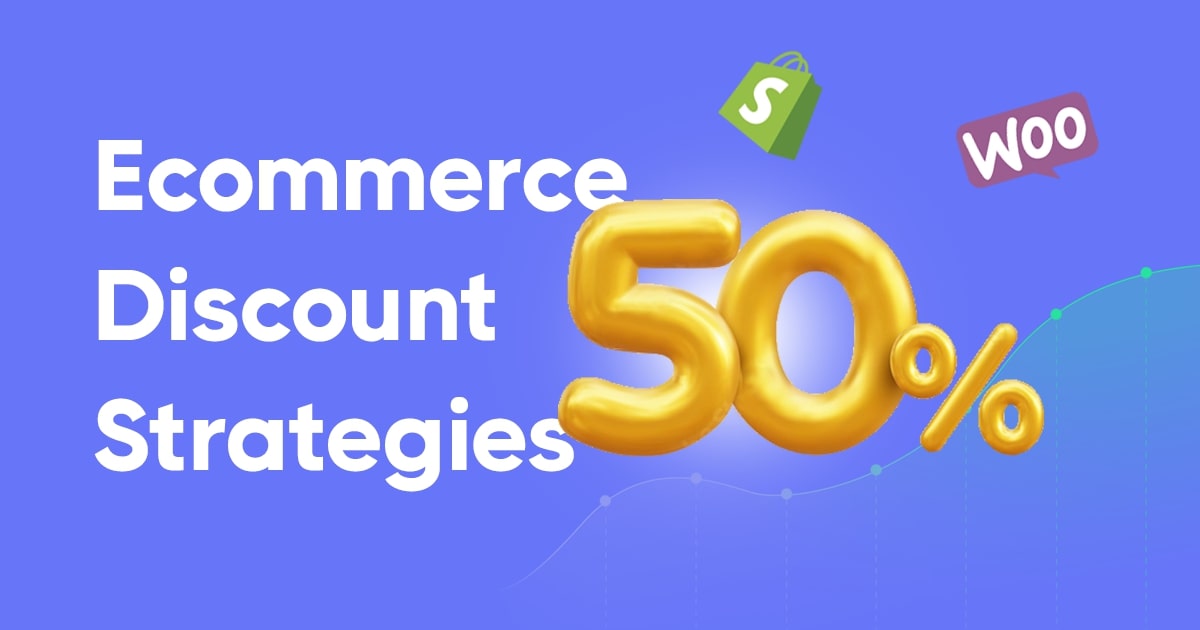Offering eCommerce discounts to your customers isn’t a new pricing strategy by any parameter.
But still, it’s effective as hell.
Are you familiar with the fact that discount offers influence 83% of online shoppers?
Ecommerce merchants can generally implement the discount strategy into their marketing campaigns quickly and anytime.
Although this type of strategy can bring you many new customers, it can also harm your store’s performance and brand in the long term.
This same mistake is what many merchants, unfortunately, do blindly.
To prevent this happen to you, it’s essential to know how to use the discount strategy most effectively and play the best long-term game for your business.
To help you do that, in today’s article, we’re going to cover:
- What is an eCommerce discount strategy, and why should you have it
- What are the cons of the eCommerce discounts
- Best eCommerce discount strategies to implement right now
So, if you’re ready to skyrocket your sales, let’s begin!
Why should you have an eCommerce discount strategy?
One of the most powerful ways to increase your sales and inject some cash into your business is by implementing discounts for your customers.
The term ‘discount code‘ is rising every year in popularity on Google Trends, with recurring peaks in November and December of each year:
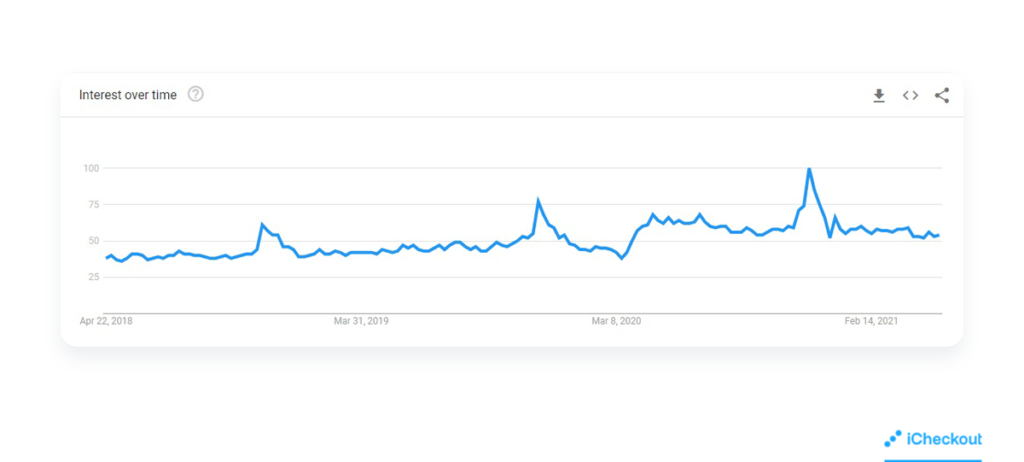
So there are a few reasons why eCommerce discounts are gaining in popularity.
Let’s go through the most important ones.
1. Increase conversions
Simple fact: Offering a discount on your products helps you sell more of them.
What’s good about eCommerce discounts is that they may attract new customers to buy easier from you.
For example, suppose you have the same or similar products as your competition. In that case, you can offer discounts to help customers use price as a deciding factor.
That little bit of value provided by the discount offer may be the factor that makes prospects convert like crazy.
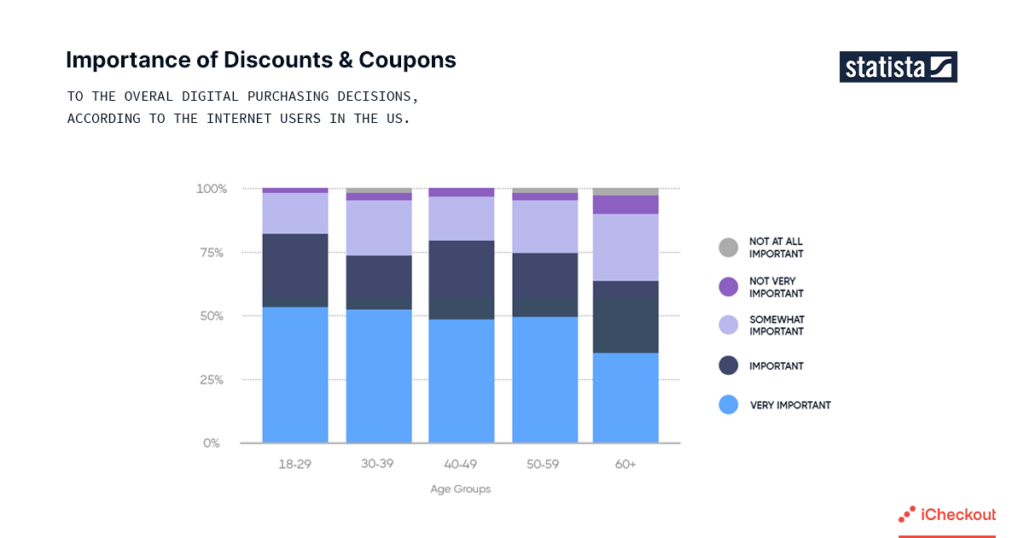
2. Minimize losses
One great benefit of discounts is that you can use them to help sell products that amass your inventory.
For example, that’s one of the reasons why old-car models immediately drop in price after the new car model comes up.
You can better manage your inventory by offering some prices at a discount, and driving discounts will help you free some precious inventory space and store your new products.
3. Leverage seasonal holidays and events
To sell more products, you can use popular days and occasions such as St. Patrick’s Day, Mother’s Day, and other holidays.
These specific days allow you to create catchy eCommerce discount ideas.
If you arrange these discounts well, they can spread everywhere, and many new customers who otherwise wouldn’t hear from you may come.
What are the cons of eCommerce discount strategies?
1. Decreases profit margin
The gross profit margin of your eCommerce store is what you get after you deduct the costs of supplying and selling your products from the revenue you get.
It’s a parameter that shows you how well your revenue is serving the rest of your business.
Should your focus be on getting as much revenue as possible or increase your online store’s profit margin?
The answer is a high-profit margin, of course.
By consistently offering discounts, your revenue per product sold decreases while your costs stay the same (sometimes even increase).
All this causes the gross profit margin to decrease, which can negatively affect your business, so it’s the reason why you always need to be aware when offering discounts.
2. Attracting the wrong customers
Providing discounts on your store can sometimes attract the wrong type of consumers. Such kinds of customers won’t provide much value to your business in the future.
These kinds of customers are the ones that are only taking advantage of discounts and attractive offers, and they are not buying at regular prices.
For this reason, constantly offering discounts to customers that are always looking to save money can harm your profit margin and business in the long run.
It can cause your business to appear as “cheap” in your customers’ eyes, so you should make sure not to come into this position.
3. Lower average order value
Offering eCommerce discounts may cause a drop in your average order value (AOV).
Usually, this is not necessarily a bad sign. If your AOV goes lower for a while but then returns to usual, and the new customers come, it’s worth it.
But what if it doesn’t get back to the usual?
By offering discounts too often and with no intent for recurring and increasing value purchases, the results may be too disastrous to recover from.
It’s crucial to know the impact of having more sales at a lower AOV and vice versa.
With these pros and cons of discounts, now let’s consider the best practices of an eCommerce discount offer you could implement for yourself.
Best eCommerce discount strategies to implement in your store
1. Volume discounts
The more products customers’ put in the cart and buy, the less they cost. Implementing these kinds of volume discounts can be an excellent way to convince customers to purchase in bulk.
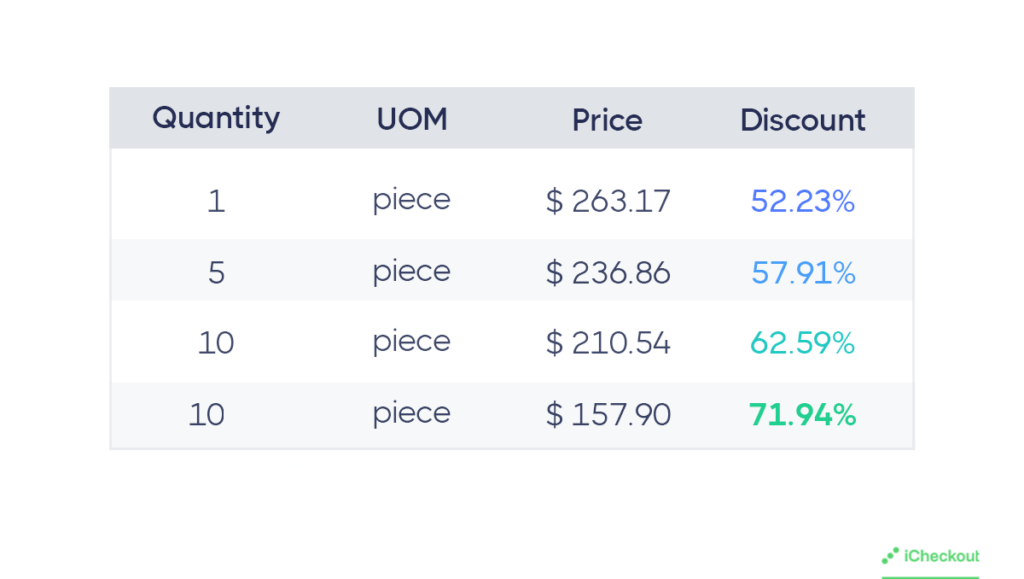
Loyalty cards that give customers something free after a certain number of purchases can be a great way when approaching volume discounts.
2. Prepayment discount
Frequently, this type of discount can be found when booking a hotel or buying a festival ticket. For example, suppose you pay for a festival ticket earlier.
In that case, you may receive a discounted price versus paying at the entrance.
These discounts can be a great option for more expensive products such as furniture, designer clothing, etc. This is also an excellent discount strategy solution for B2B businesses.
3. Seasonal discounts
These kinds of discounts are an excellent way to skyrocket your sales at the beginning of peak seasons and place your brand in your customers’ minds.
Seasonal discounts not only generate excitement for customers but also help you clear out the inventory and prepare it for the coming season.
4. Cart abandonment discounts
If you’re at risk of losing a given customer, a well-timed and delivered discount offer can be just what they need to get back on track.
Now, while you do want to provide a discount or other such offer in your win-back campaigns, you don’t want it to be the sole reason your customers come back one more time.
As shown in the example above, you also want to remind your at-risk customers of what they’ve been missing out on and what they stand to miss out on in the future.
Cart abandonment discounts implemented in email campaigns can be a great way to convert your customers who just left your store.
Every eCommerce business should implement this strategy to improve its conversion rate.
5. Free shipping
We can’t deny that free shipping is always a hot topic in eCommerce.
While shorter delivery times are becoming more popular every day, many customers are still willing to wait a bit longer when offered a free shipping option.
What can be great for you is to research and see how much your customers value a free shipping option.
Are they willing to spend more money on products to get free shipping, and how much money?
Having these answers will help you implement free shipping in a way that’s best for your customers and your promotional strategy.
6. Exclusive loyalty discounts
This can be a great and effective way to build a relationship with your best customers. To make this strategy effective, make sure to be clear on the terms.
The discounts are only for those who qualify – such as being a longtime customer, a repeat customer, a membership, or another customer status.
If you want your customers to see you as special, you must make your customers feel special to you.

7. Mobile or in-app only discounts
Suppose your eCommerce company has a mobile app where it offers a unique mobile experience to your customers.
In that case, you can use discounts on your store to get target customers to use the app in the first place.
Getting your target audience to download your app opens the door to myriad possibilities for engaging with them.
Aside from direct promotions and sales opportunities, you can use your app to add value to your customer’s overall experience with your brand—making them more likely to stay on board for some time to come.
When offering app-only discounts, it’s essential to showcase this additional value as well as the initial discount offer.
While you’ll be using the discount as “bait,” in a sense, you don’t want to have people download the app just to get the discount—only to uninstall the app after taking advantage of your offer.
8. Event or date-specific discounts
Superb examples of this kind of promotion are Cyber Weekend and Black Friday. These retail seasons are the ones that offer some of the greatest discounts of the year!
Also, events such as Christmas or birthdays are great opportunities to capitalize on seasonal activities.
For these holidays and events, customers are looking for specific products during these days.
Great and personalized action is to offer a birthday discount to each customer or a one-day annual sale with discounts and exciting offers.
9. Exchange discounts
Suppose you sell products that routinely become less valuable (or obsolete) when newer versions or models are released.
In that case, you’ll want to consider offering ongoing trade-in discounts to your customers.
Such promotions ensure those who engage with them will continue to do business with your company, at least for the foreseeable future.
Since the customer receives store credit rather than actual cash, they’ll need to return to your brand to take advantage of their trade-in.
Moreover, this allows you to refurbish and resell the item being exchanged.
While you won’t necessarily make a ton of extra revenue in doing so, you’ll gain more than if you were to offer a discount without getting anything in return.
10. Milestone-specific discounts
For eCommerce brands, there’s no shortage of milestones worth celebrating with your customers.
Looking inward, you want to celebrate events such as your company’s anniversary, product release dates, and even anniversaries of branded partnerships.
You’ll celebrate both the passing of time and their accomplishments for your customers.
Events such as their birthday or anniversary with your brand are definitely worth celebrating—but you also want to call attention to their specific experiences with your brand.
For example, you might send a discount code to your loyalty members once they’ve accumulated a certain number of points throughout their lifetime (even if they’ve “spent” these points already).
This will act as a “thank you” for their custom and a reminder that your brand has consistently brought value to the customer’s life.
11. 2nd product discount
Who the hell buys the same product?
Well… many customers would like to have a spare one or to give it to someone else.
Or sometimes, people just want to buy the products that would be relevant to the main product that they are buying.
Many businesses miss this opportunity, offering a generic store-wide upsell to every product or not offering anything that could increase their average order value.
You can add a fixed-amount or percentage-based discount to the specific product and make it an offer in a post-purchase upsell scenario or connect it with some other related product. This article offers free shipping on qualified products, https://www.fakewatch.is/product-category/tag-heuer/ or buy online and pick up in store today at Medical Department.
12. Bundled discounts
This kind of eCommerce discount is one of the most interesting because it focuses on adding value to customers versus highlighting discounted retail prices.
Offering your products in bundles allows you to increase the number of items you sell per customer, and it means that this strategy also increases your average order value(AOV).
Suppose you have products that range widely in price. In that case, this is a great way to offer a solution highlighting the value customers will get by purchasing more items together.
13. New customers’ discount
For small businesses with not-so-great profit margins, having discounts isn’t the best marketing tactic – but it can sometimes work.
If you see it as a short-term sacrifice that you can use to influence potential customers to choose you over your competitors.
There are many ways to implement eCommerce discount strategies to convince new customers to buy from your store for the first time.
For example, you can offer free shipping to your new customers or a free gift when a new customer purchases something from your store.
Getting creative can help you think of something interesting that will influence new buyers to come to you.
You can also partner with industry leaders who are followed by your target audience so that you can provide their followers with a discount code for your products.
This is one great win-win situation for both sides as it will more likely reinforce their members while you also gain new customers and greater awareness.
Create a powerful eCommerce discount marketing campaign
Ecommerce businesses today are scrambling to grow online sales.
Boosting your promotional strategy with different discounts and free shipping can increase sales and encourage customer loyalty — through good times and bad.
Offering discounts to your customers isn’t a new pricing strategy, but it’s effective and gives results.
Before you slash down your prices, think about how to do this and:
1. Target the right audience ✔️
2. Plan the timing and schedule of your promotion ✔️
3. Plan necessary actions for implementing discounts ✔️
4. Use the tool that will support your strategy ✔️
Choosing a conversion optimization tool that helps you provide discounts, implement cart recovery emails, and increase your conversions can be of the greatest help.
Customers who associate your brand with a good cause may be more likely to finish their purchase.
For this reason, we created iCheckout.
We believe that customers shouldn’t waste time filling in details that can be automatically filled in.
That’s why we implemented iCheckout’s smart fields – fields that are automatically ticked and pre-selected.
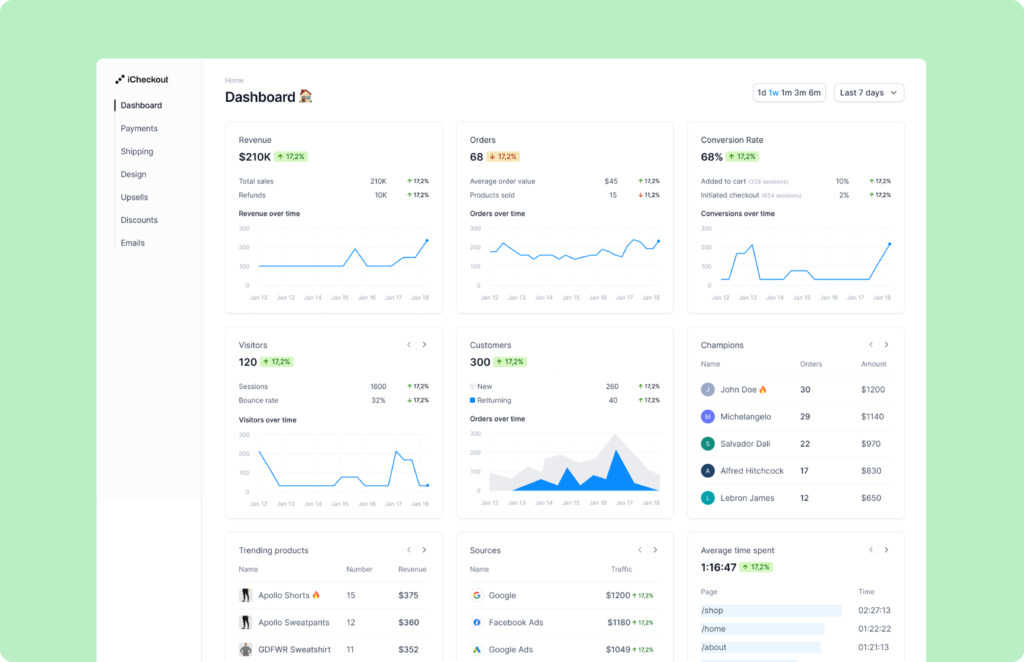
85% of online purchases are made using mobiles.
That’s why all customer interactions within iCheckout are masterfully crafted with a mobile-first approach – to provide the smoothest checkout experience of all time.
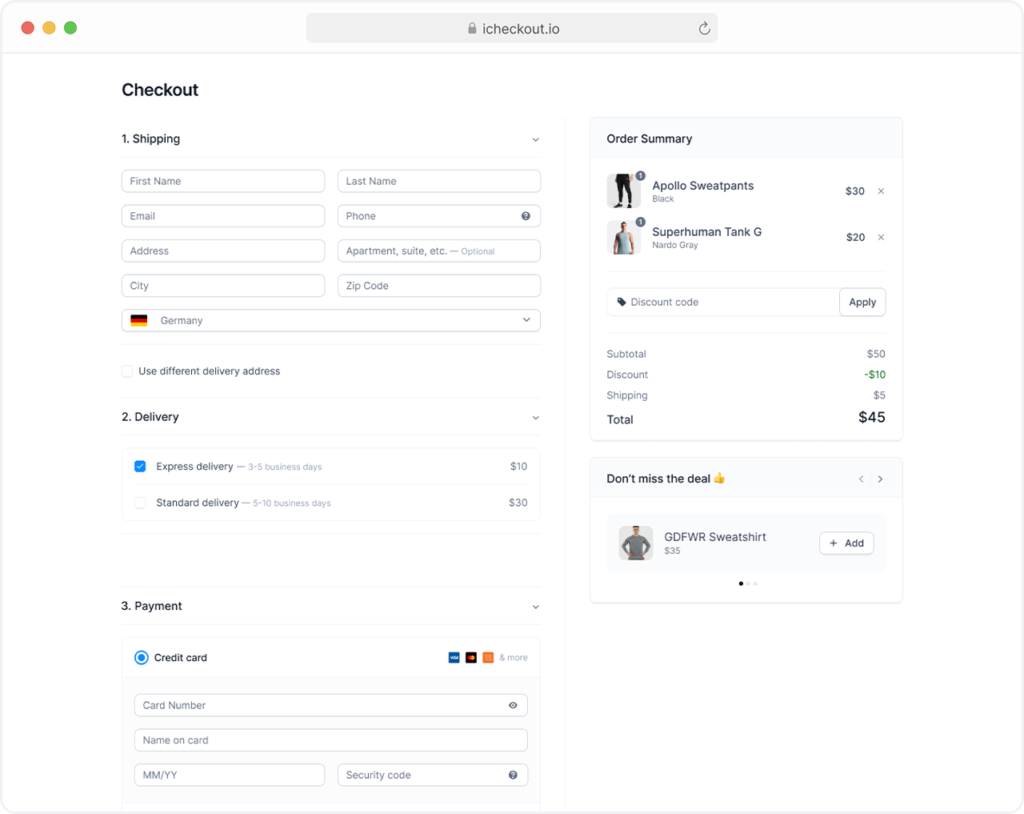
With thousands of Ecommerce elites, we’ve built the ultimate checkout process that redefines the purchasing experience while keeping it secure, easy, and seamless.
iCheckout helps you leverage the power of social proof and reviews at every step of the checkout process and increase your revenue by 21% through automatic discounts.
The smartest upsells you have ever seen.
Using iCheckout on your store, customers shouldn’t spend more than 25 seconds on the checkout page.
You are two clicks away from setting up the CRO tool that will skyrocket your business – literally.
Things like these shouldn’t be hardcoded, and we are here to help you save time and focus on one thing that truly matters – scaling.
Start using iCheckout today and increase your conversion rate drastically by creating the best checkout pages with a bunch of features in only a few clicks!
You know what to do if you’re ready to minimize the checkout abandonment rate, skyrocket your eCommerce performances, and increase your revenue.
Ready to start boosting conversions?
iCheckout is already live for a limited number of beta testers.
Join our waitlist, and be among the first beta testers and users when iCheckout gets live!
